Ranthambore National Park is one of India’s most famous tiger reserves, located in the Sawai Madhopur district of Rajasthan. Known for its thriving population of Royal Bengal Tigers, this wildlife sanctuary is a paradise for nature lovers, photographers, and adventure seekers.
🌿 About Ranthambore National Park
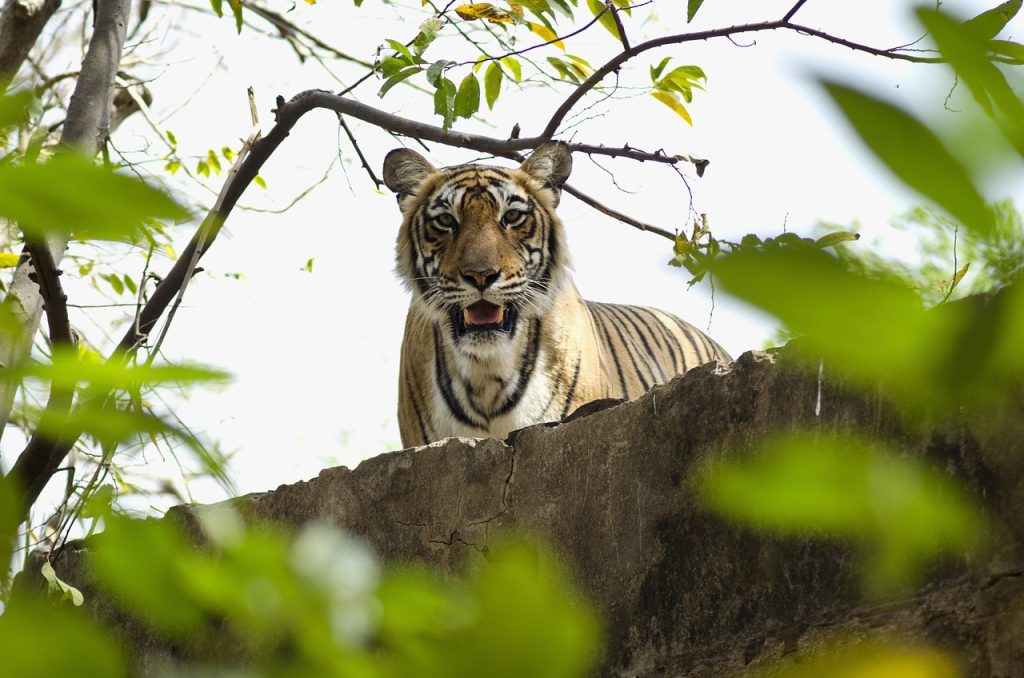
Spread across over 1,300 sq. km, Ranthambore National Park is a former royal hunting ground turned wildlife haven. It’s home to tigers, leopards, sloth bears, sambars, and over 250 bird species. The park’s dramatic landscape of dry deciduous forests, lakes, and ancient ruins adds a mystical charm to every safari experience.
Fun Fact: Ranthambore gets its name from the historic Ranthambore Fort, which stands majestically inside the park and is now a UNESCO World Heritage Site.
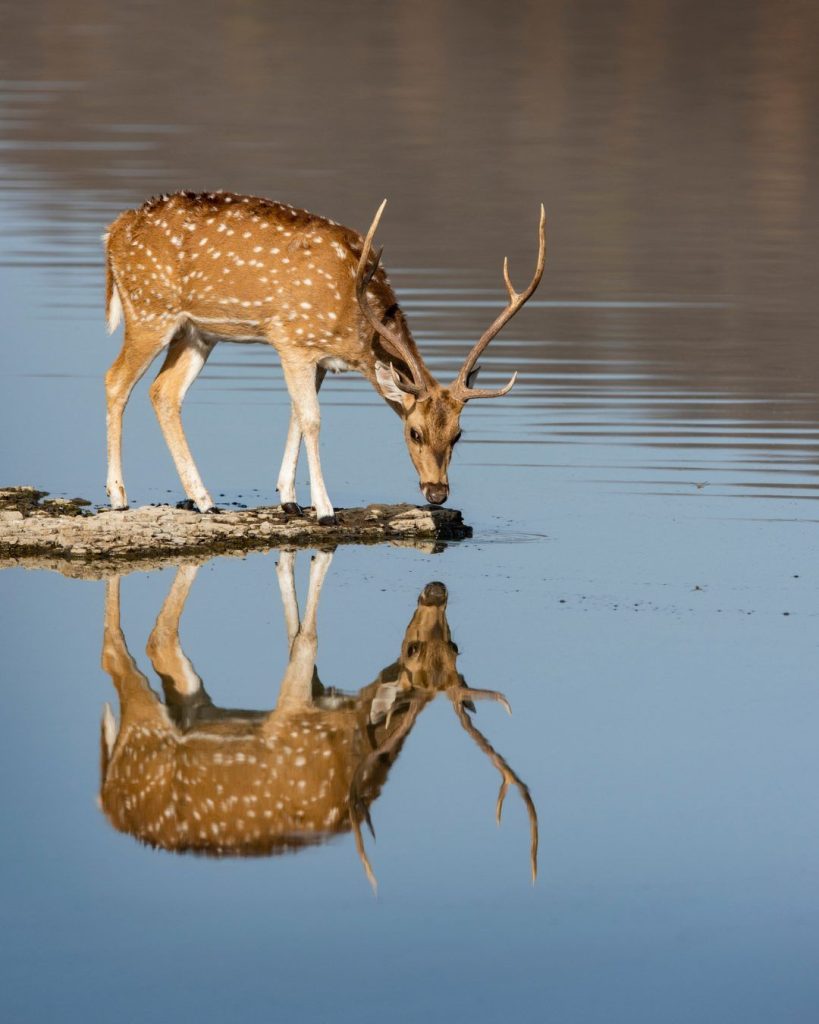
Ranthambore is most famous for its National Park, but it also offers a mix of history, nature, and culture.
places to visit in ranthambore
Inside the ranthambore National Park Area
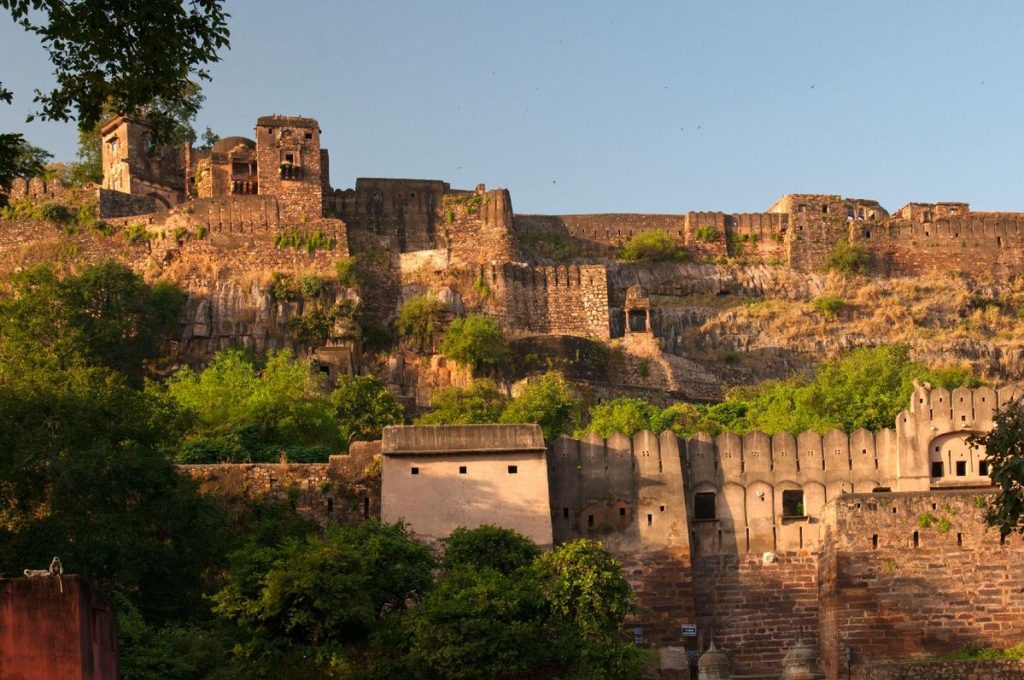
- Ranthambore Fort
- A UNESCO World Heritage Site, this 10th-century fort is perched on a hilltop within the national park.
- It offers stunning panoramic views of the forest and is an excellent spot for history buffs and photographers.
- Highlights: The massive gates, ancient temples, and ruins of palaces and courtyards.
- Timing: Generally open from morning (around 6:00 AM) to evening (around 6:00 PM). It’s best to check with local authorities as access is tied to the park’s timings.
- Trinetra Ganesh Temple
- Located inside the Ranthambore Fort, this is one of the oldest and most revered temples dedicated to Lord Ganesha in Rajasthan.
- It is unique because the deity is depicted with three eyes.
- Lakes (Talabs)
- These lakes are major water sources for the wildlife, especially for tigers, and are excellent for spotting animals and birdwatching.
- Padam Talao: The largest lake, known for its beautiful water lilies (Padam) and the nearby Jogi Mahal.
- Raj Bagh Talao: Surrounded by scenic ruins, it’s a prime location for wildlife spotting.
- Malik Talao: The smallest of the three major lakes, good for birdwatching and spotting crocodiles.
- These lakes are major water sources for the wildlife, especially for tigers, and are excellent for spotting animals and birdwatching.
- Raj Bagh Ruins
- Ancient, crumbling stone structures, including remnants of palaces and outhouses, located between Padam Talao and Raj Bagh Talao. They provide a beautiful, haunting backdrop in the wilderness and are a favorite resting spot for tigers.
- Jogi Mahal
- A striking red sandstone heritage structure situated on the edge of Padam Talao. It was once a royal hunting lodge and is famous for having one of India’s largest banyan trees next to it.
- Kachida Valley
- A picturesque valley area on the park’s outskirts, known as a habitat for panthers and sloth bears, as it’s away from the core tiger zones.
Nearby Attractions
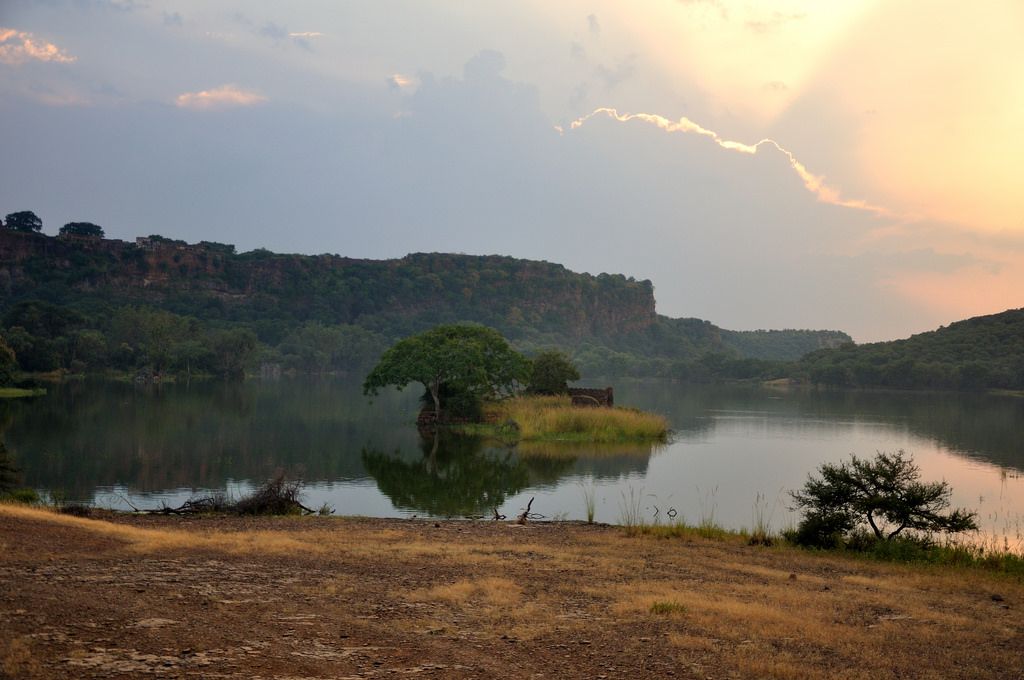
- Ranthambore School of Art: Dedicated to promoting wildlife conservation through art, you can view and purchase paintings here.
- Surwal Lake: A seasonal lake (best visited from November to March) that becomes a haven for migratory and resident birds, making it a perfect spot for birdwatching and photography.
- National Chambal Gharial Sanctuary: Located nearby (about 50-60 km away), it offers a chance to see gharials (fish-eating crocodiles), marsh crocodiles, and various bird species through a boat safari on the Chambal River.
best time to visit ranthambore
The different seasons for visiting Ranthambore National Park and explains the advantages of each period:
🐅 Park Operating Season: October to June
This is the main tourism period when Ranthambore is open for safaris, offering two distinct experiences based on weather and animal behaviour.
🌿 October – March: The “Best Time” for Comfort
- Weather: The weather is pleasant (this is the winter and post-monsoon period). The cooler temperatures make daytime safaris and general travel much more comfortable, especially compared to the summer heat.
- Park View: Following the monsoon, the park is full of lush greenery. This creates a beautiful, vibrant landscape, which is great for photography.
- Tiger Sightings: While the greenery can sometimes offer more hiding places, this is still a very popular time for tiger sightings, as the comfortable weather encourages the animals to be active. This is often considered the peak tourist season.
🔥 April – June: The “Best Time” for Tiger Sightings
- Weather: The weather is Hot; temperatures can soar. This is the summer season in Rajasthan.
- Tiger Sightings: The intense heat makes this time excellent for tiger sightings. As water sources dry up in the scorching heat, animals are forced to gather near the remaining water sources (waterholes and lakes) to drink and cool off. This predictable movement makes them easier for visitors to spot.
- Crowds: Due to the heat, there are often fewer tourists, which can lead to a more tranquil safari experience.
🌧️ July – September: Monsoon Closure
- Park Status: The park remains closed during the monsoon season.
- Reason: This closure is primarily to allow the forest to rejuvenate during the heavy rains and also to provide a period of rest for the animals, which is often their breeding season. Certain buffer zones (outer areas of the park) may remain open for a limited experience, but the main (core) zones are closed.
ranthambore safari price
| Vehicle Type | Nationality | Price per Seat* | Full Vehicle / Private Booking |
|---|---|---|---|
| Jeep / Gypsy (6-seater) | Indian | ₹1,800 ‒ ₹2,000 | Approx. ₹11,000 – ₹12,000 per jeep (Ranthambore National Park) |
| Foreigner | ₹4,000 ‒ ₹4,200 | Approx. ₹24,000 per jeep (Ranthambore National Park) | |
| Canter (20-seat) | Indian | ₹1,300 ‒ ₹1,500 | — (ranthamboretigerreserve.co.in) |
| Foreigner | ₹2,700 ‒ ₹3,500 | — (tigersafariranthambore.com) |
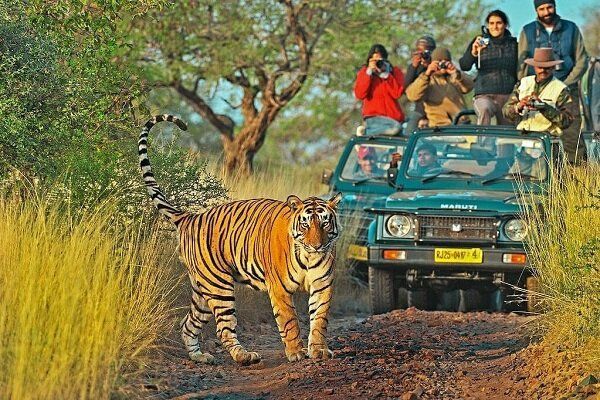
Safari Experience
Visitors can choose between jeep (6-seater) or canter (20-seater) safaris. Both options are guided by licensed naturalists who share fascinating insights about animal behavior and forest ecology. Safaris are conducted in two slots:
- Morning Safari: 6:30 AM – 9:30 AM
- Evening Safari: 2:30 PM – 5:30 PM
Travel Tips to Ranthambore National Park
Carry a good zoom lens if you’re into photography
- Explanation: Wildlife often keeps its distance from humans. A zoom (telephoto) lens allows you to capture close-up, detailed photos of animals without disturbing them or putting yourself at risk. It’s essential for photographing predators like tigers, leopards, or birds from a safe distance.
Wear neutral-colored clothing to blend into the environment
- Explanation: Bright colors can scare animals away or make you stand out in nature. Wearing greens, browns, or khakis helps you blend with the surroundings, making it easier to observe wildlife and get better photographic opportunities.
Avoid loud noises during safaris — patience rewards you with the best sightings
- Explanation: Wildlife is sensitive to sound. Talking loudly, clapping, or sudden movements can cause animals to hide. Staying quiet and patient increases your chances of seeing animals in their natural behavior, like hunting, feeding, or interacting with others.
Always respect wildlife and follow park rules
- Explanation: Parks have rules to protect both visitors and animals. Don’t feed animals, litter, or get out of designated vehicles. Respecting these rules ensures your safety and helps conserve the ecosystem for future visitors and the animals themselves.
🌍 Why Visit Ranthambore to Ranthambore National Park
- High chance of tiger sightings 🐅
- Ideal weekend getaway from Jaipur and Delhi
- Perfect for wildlife photography
- Blend of nature, history, and adventure
🌿 Other Wildlife Encounters in Ranthambore National Park
While the tiger is the main attraction and often the most photographed animal, the park is actually a thriving ecosystem with a variety of other species. Here’s what you can expect:
- Leopards – These elusive big cats are skilled hunters and are usually harder to spot than tigers. They are solitary and mostly active during the night.
- Sloth Bears – Known for their shaggy coats and slow movements, sloth bears feed mainly on insects, fruits, and honey. They can sometimes be seen wandering the forests or climbing trees.
- Indian Gazelles (Chinkara) – Small, graceful deer that are quick and alert. They are herbivores and often seen grazing in open areas.
- Sambar and Spotted Deer – These are larger deer species. Sambars are usually darker with a rugged look, while spotted deer (chital) are lighter with white spots and often seen in herds.
- Bird Species – Ranthambore is a birdwatcher’s paradise with over 250 species. Some notable ones include:
- Peacocks – India’s national bird, famous for their colorful feathers.
- Kingfishers – Small birds with vibrant blue or green plumage, often seen near water.
- Eagles – Majestic birds of prey soaring high, keeping an eye on the forest below.
Final Thoughts for Ranthambore National Park
Ranthambore National Park isn’t just a destination — it’s a wildlife experience that stays with you forever. The thrill of spotting a tiger, the sound of rustling leaves, and the sight of the ancient fort rising over the jungle — it’s Rajasthan’s wild heart at its finest.
If you’re planning a wildlife trip, Ranthambore Tiger Reserve should be at the top of your list!